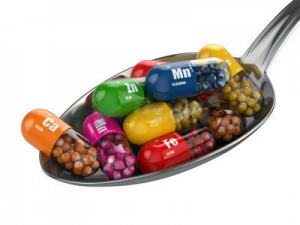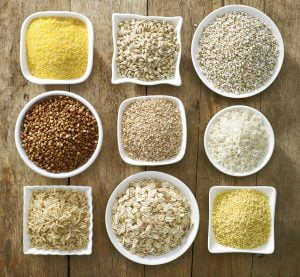Top 11 Nutrients lessons From Dr. Gena Kadar D.C

Lesson #1 – Macro & Micro
Macro nutrients: large measurable component of our food: proteins, carbs, fat, and carbohydrate, measured in grams and calories
Micronutrient: vitamins and minerals, we need them in small amount but they are very important for our ability to survive and thrive.
Lesson #2 Essential and Non-essential nutrients
Essential nutrients are the ones we can only in the source of food and our body can not manufacture it on its own. Essential nutrients: Vitamin C, and B3, Minerals (ex: potassium and magnesium), fatty acids ( alpha-linolenic acid and omega 3) and amino acids we get from proteins. Non-essential is everything else, however, we still need them to survive.

Lesson #3 Vitamins and Minerals
Vitamins – facilitate every biochemical process in your body. ADEK require fat to be absorbed into your body!
Minerals – facilitate very biochemical and structure formation of our body. The minerals we need in greatest amount are calcium, magnesium, potassium, sodium, zinc, and iodine. Minerals to regulate your blood sugar Chromium, Zinc, Selenium and Magnesium
To get all these minerals you can consume Glysen by Apex

Lesson#4 – Phytonutrients
Phytonutrients: plant food contain an additional dietary component called the phytonutrient/ phytochemical. The phytonutrients help to prevent the oxidative process that leads to Alzheimer, aging process, and cancer. A chemical known as sulforaphane is found in broccoli is a phytonutrient and has shown to have an anti-cancer property.

Lesson# 5 – Antioxidants!
Anti-oxidants neutralize free radicals that oxidize and damage healthy cells. The free radicals are produced as a natural process in our body. Free radicals accumulate in response to our external environments such as smoke and pollutant. Examples of antioxidant-rich food: chia seeds, blueberries, blackberries, spinach, kale, dark chocolate, goji berry, beetroot, prune, pecan, kidney beans, cilantro, artichoke, elderberry
Supplement:
- AC- Glutathione – very important antioxidant
- prevents damage to the cell
- defense against drugs and carcinogens
- cognition
- energy
- decreases inflammation
- helps with liver damage
Few of the great benefits!

Lesson #6- Carbs!
Carbohydrates are either simple sugar or complex carbs. A simple sugar is glucose and is found in food such as candy, cookies, sugary soda, processed breakfast, pasta, bagel, and white bread. Eating this food is like the injection of sugars, this food make the receptors that take in sugar ( insulin receptors ) insensitive to sugar and therefore they will be floating in our arteries and causing oxidative stress and free radicals or feeding our bad bacteria and causing a lot of inflammation.
Complex carbs are food such as legumes, vegetables, fruits’, nuts, seeds, and whole grains and they function like a time-release capsule of sugar. The complex carbs are also rich in minerals, vitamins, and phytonutrients.

Lesson # 7 – Eliminate sugar!
Eliminate added sugar products in your life or no more 100 calories per day, there are a lot of added sugars in the food you buy at grocery stores such as fruit juices, sodas, bagel, pasta, flavored yogurt, flavored cocktail, baked goods, sweet sauces like ketchup or honey barbeque. How do you know a food is high in sugar? If the label says 15 g of total sugar per 100 g of serving that is HIGH SUGAR! If there is 5 g of total sugar or less per 100g serving of that total the food is low in sugar.
Tip: consume whole fruits instead of fruit juices.
Tip look for additives like corn syrup, high fructose corn syrup, honey, fructose, glucose, fruit juice concentrate, raw sugar, agave nectar, molasses and various syrups. If you see these ingredients, it means the greater the amount of sugar in the food. A smart choice is to minimize and avoid consumption of foods with a sugar listed as one of their first three ingredients.

Lesson #8 the whole grain controversy
What’s the problem with grains? They attach to our minerals and don’t allow them to be absorbed properly. They cause imbalances with our microbiome. Eat your grains mindfully
Lesson #9 Fatty acids

Fatty acids and specifically omega-3 are required to build the membrane of every cell of our body, from our skin to our bones. These membranes have receptors that allow the cell to communicate with every other cell, hormone, and peptide. The wrong type of fat will make our cells dysfunctional! When choosing food, be sure to mainly choose an unsaturated source of fat such as avocados, almonds, walnuts, and olive oil. Opt for fatty fish like salmon, herring, sardines, mackerel and tuna over ground meat. If you eat meat, be sure to choose grass-fed meats as opposed to grain-fed meat.

Lesson #10- Proteins
All proteins are a long chain of amino acids and amino acids are the building blocks of all our muscles and produce hormones and neurotransmitters that our body needs. Thus having an adequate amount of protein in our diet is necessary in order for us to have a sense of wellbeing. Unlike fat and carbs, our body does not restore amino acids for later use, thus the amount of protein we take must be replenished daily. Your source of the protein includes chicken, eggs, fish, beans, spirulina, quinoa, lentil and kidney beans and rice. Although red meat is a source of protein, I do not recommend them due to how it has been shown to cause a variety of conditions.
Lesson #11 – Calories
Should you count calories? Scientific evidence has shown that counting calories may not be as foolproof as once thought. We can accurately measure the energy or calorie value of any given food, but once we eat them, things change. Our body reacts differently to different types of food and not all calories are created equally. We will not focus too much on calorie counting, however, an estimate of your daily caloric intake can be a good guide to give you an idea how much energy you need to maintain or lose weight.
Thanks to Dr. Gena Kadar D.C

